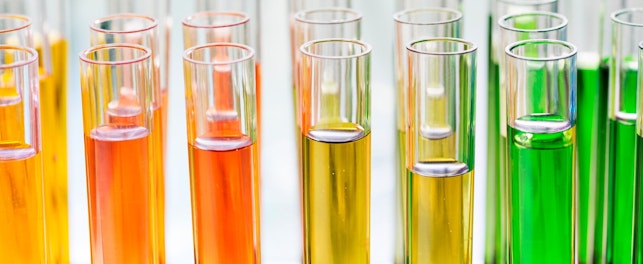
在社会责任审核中,化学品管理是一个很重要的内容,比如:BSCI审核、SMETA审核等都会关注化学品管理;环境验证项目的Higg也将化学品管理纳入了验证范围。而化学品管理的重点在于危险化学品的管理。很多企业不是很了解危险化学品的管理要求,接下来我们来简单介绍一些危险化学品管理的基础知识。
1. What are hazardous chemicals?
According to Regulations on the Safety Administration of Hazardous Chemicals Article 3: The hazardous chemicals mentioned in this regulation are the highly toxic chemicals and other chemicals with the properties covering toxic, corrosive, explosive, burning, combustion supporting, etc., They are harmful to human body, facilities and the environment.
In daily management, we can make the judgments according to the hazards of chemicals simply, such as: the flammable and explosive chemicals (Ethanol, methanol, etc.), strong acid chemicals (hydrochloric acid, nitric acid, sulfuric acid, etc.), toxic and harmful chemicals (benzene, toluene, carbon monoxide, chlorine, etc.); We can query the Catalogue of Hazardous Chemicals for conformation when we do not know the properties of chemicals.
2. How to classify the hazardous chemicals?
There are two common classifications:
1) According to GB 13690-2009 General rule for classification and hazard communication of chemicals, the hazardous chemicals are divided into three categories:
- Physical and chemical hazards (16 sub-categories)
- Health hazards (10 sub-categories)
- Environmental hazards (1 sub-category)
2) According to GB 6944-2012 Classification and code of dangerous goods, the dangerous goods are divided into nine categories:
- Explosives,
- Compressed and liquefied gases,
- Flammable liquids,
- Flammable solids, pyrophoric substances and substances that are flammable when wet,
- Oxidants and organic peroxides,
- Toxic,
- Radioactive substances,
- Corrosive substances,
- Miscellaneous hazardous substances and substances
Each transportation unit should follow GB 6944-2012 Classification and code of dangerous goods, so we are familiar with the names of the nine categories, such as: the alkali metals (lithium, sodium and potassium are common) belong to the flammable solids, spontaneous combustion articles and flammable articles when wet. The alcohol (ethanol) belongs to the flammable liquid, and the oxygen cylinders are compressed gases, etc.
3. The management of the hazardous chemicals
Enterprises needs to establish the list of the hazardous chemicals, which should cover all hazardous chemicals being used; then enterprises should follow the requirements for the hazardous chemicals control according to the type and the storage volume of the hazardous chemicals. When the storage volume of the hazardous chemicals reaches the level of the major hazard source, the enterprises should establish the management requirements according to Interim Provisions on the Supervision and Administration of Major Hazard Source for Hazardous Chemicals, the detail requirements could be referred to the Safety Evaluation Report.
The general requirements for the hazardous chemicals cover the safety label, the secondary containments, PPEs, the storage requirements, the emergency facilities/medicines. The emergency facilities cover the eye-washing facilities and showers, the emergency medicines would be referred to the requirements in MSDS (For example, the emergency medicines for the hydrofluoric acid are the calcium gluconate gel/solution).
Hazardous chemicals indifferent hazard categories have special requirements differently, for example, the anti-static devices should be equipped for the flammable and explosive chemicals.
4. Storage Requirements of Hazardous Chemicals - Compatibility
There are many storage requirements for the hazardous chemicals, such as- anti-leakage, anti-static, explosion-proof, etc. The compatibility of the chemicals is the key point to consider whether the different hazardous chemicals could be stored in the same units. The simplest requirement is that the acid and the alkali can’t be stored together, for example: The hydrochloric acid and the alkali can’t be stored together. The details are clearly specified in GB 15603-1995 Rule for storage of chemical dangers, and the storage principles are as follows:
- Acid and alkali shall be stored separately
- Flammable chemicals and toxic chemicals shall be stored separately
- Flammable chemicals and oxidizing chemicals shall be stored separately
- Flammable chemicals and compressed gases shall be stored separately
- Oxidizing chemicals and reducing chemicals shall be stored separately
The hazard categories of hazardous chemicals need to refer to MSDs, and the compatibility of hazardous chemicals can also be simply judged according to the pictogram:
5. Control of Special Supervision Chemicals
In general, the highly toxic chemicals and the precursor chemicals are special supervision chemicals, and the control of these chemicals is supervised by government departments. We just briefly introduce some key control requirements.
1) Highly toxic chemicals: The purchase of the highly toxic chemicals should be approved by the public security organization. The enterprise shall conduct the ‘Five Doubles’ system (double persons for acceptance, double persons for customs declaration, double persons for delivery, double person with double lockers, double inventories). The main chargeable person, the safety management person and the operators in the enterprise with the highly toxic chemicals should be trained and qualified. The cyanide which is used in electroplating process is the common highly toxic chemicals.
2) Precursor Chemicals: They are divided into three categories (Class I, Class II and Class III). Class I Precursor Chemicals are rare, general enterprises may use the Class II Precursor Chemicals and Class III Precursor Chemicals. For example, the phenylacetic acid, acetic anhydride, chloroform, ether, , are Class II Precursor Chemicals, and the toluene, acetone, sulfuric acid, hydrochloric acid, belong to Class III Precursor Chemicals. The precursor chemicals should be controlled according to Regulations on the Administration of Precursor Chemicals The Article 17 stipulates that: an enterprise that applies for purchasing the precursor chemicals in Class I & II shall register the type and quantity to be purchased at the local public security organ of the people’s government of the county before purchase. It is not necessary to record a small amount of potassium permanganate for personal use.
All of the above are the introductions to the basic knowledge of hazardous chemicals. If you want to know more information, please feel free to contact us, we can provide further services.
ENQUIRIES & REGISTRATION:
Ms Calla Huang
t: +86 (0)755 2532 8137
e: cn.rbs@sgs.com
About SGS
We are SGS – the world’s leading testing, inspection and certification company. We are recognized as the global benchmark for quality and integrity. Our 96,000 employees operate a network of 2,600 offices and laboratories, working together to enable a better, safer and more interconnected world.
16th Floor, Block A, No.73 Fucheng Road, Century Yuhui Mansion,
Beijing, Haidian District,
China





